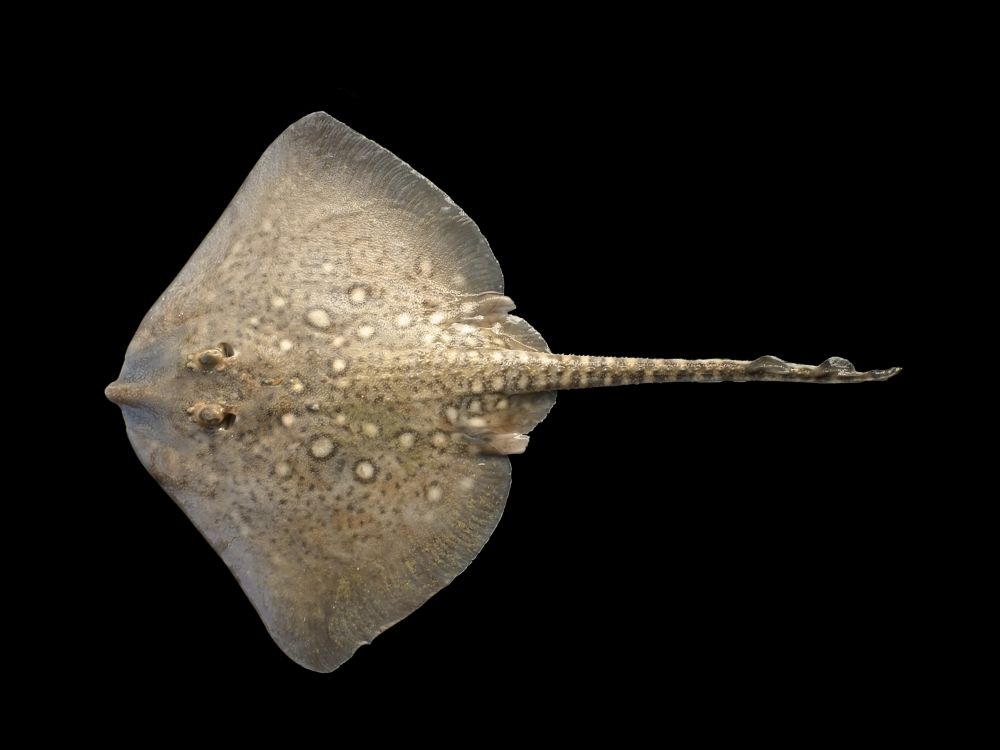
Read the article with FishingTheSpot: the thornback ray
Keep an eye on this subject!
Thousands of species spotlights and techniques but also all the local information about your city!



Meet other anglers near you and share your fishing fishing trips, afoot or on a boat, at sea or in freshwater
See the fishing tripsThe Thornback Ray

All year
36 cm
Did you fish
this species this month?
The Thornback Ray belongs to the Rajidae family. The size of this line can reach 1.20 m long for females, 70 cm for males, and 60 cm wide. Its lifespan is estimated at about fifteen years. It reproduces in the spring. The female lays between 70 and 140 young each year. It can be fished all year round.
The looped line has the flattened shape of a narrow, diamond-shaped disc, sometimes wavy at the back. The pectoral fins are large, triangular in shape. They are welded to the head and to the whole body. The tail is long and thin, with a triangular pelvic fin on either side. The snout and rostrum are short and pointed. The eyes are close together, in front of the spiracles. The color of its back is greyish or light brown, sometimes solid, but usually marked by dark spots assembled or in sinuous lines. This drawing is completed with large yellowish, irregular spots. These are then surrounded by black in young people. An adult individual may also be adorned with grey-bordered eye-spots. The belly is whitish, underlined with grey on the periphery. The mouth and 2 series of 5 gill slits are located on the ventral side. The upper jaw is armed with powerful teeth, pointed in males and flattened in females. Finally, the tail is adorned with a series of dark or light, uneven rings. The skin is rough. In adults, the dorsal surface of the disc includes a few large curls (curved horny spines with an oval base) arranged irregularly. The young have a very pronounced median line, up to the t
The Thornback Ray lifestyle
The thornback Ray hunts on the lookout and feeds on small groundfish, mollusks and crustaceans. Young people prefer worms and crustaceans.
In spring, during the breeding season, the males move to shallow waters. The females come next. The rays are oviparous. A female thornback ray lays a fairly large number of rectangular and flat eggs of about 5 cm each year (between 70 and 140). It is a black corneal shell, extended by a point at each corner. It is split, which allows water to enter: thus, the embryo can breathe. It is often deposited in algae or sand. When they leave, after about 5 months, the young people measure 8 to 10 cm. In English, skate eggs are called "mermaid purses".
The Thornback Ray habitat
The thornback ray is quite common on sandy, gravel or mud bottoms, often close to the coast, at shallow depths. However, it lives up to 300 m deep in the Atlantic and up to 400 m deep in the Mediterranean.
It can be found in the North-East Atlantic, from Congo to Norway and Iceland, in the North Sea, the Black Sea and the Mediterranean Sea.
The thornback Ray angling
The thornback is fished to support, to pose, to drift in a lively way and mainly to surfcasting.
For the latter option, prefer a bulky bait such as herring, mackerel, sardine, pout, squid, crab or squid.


